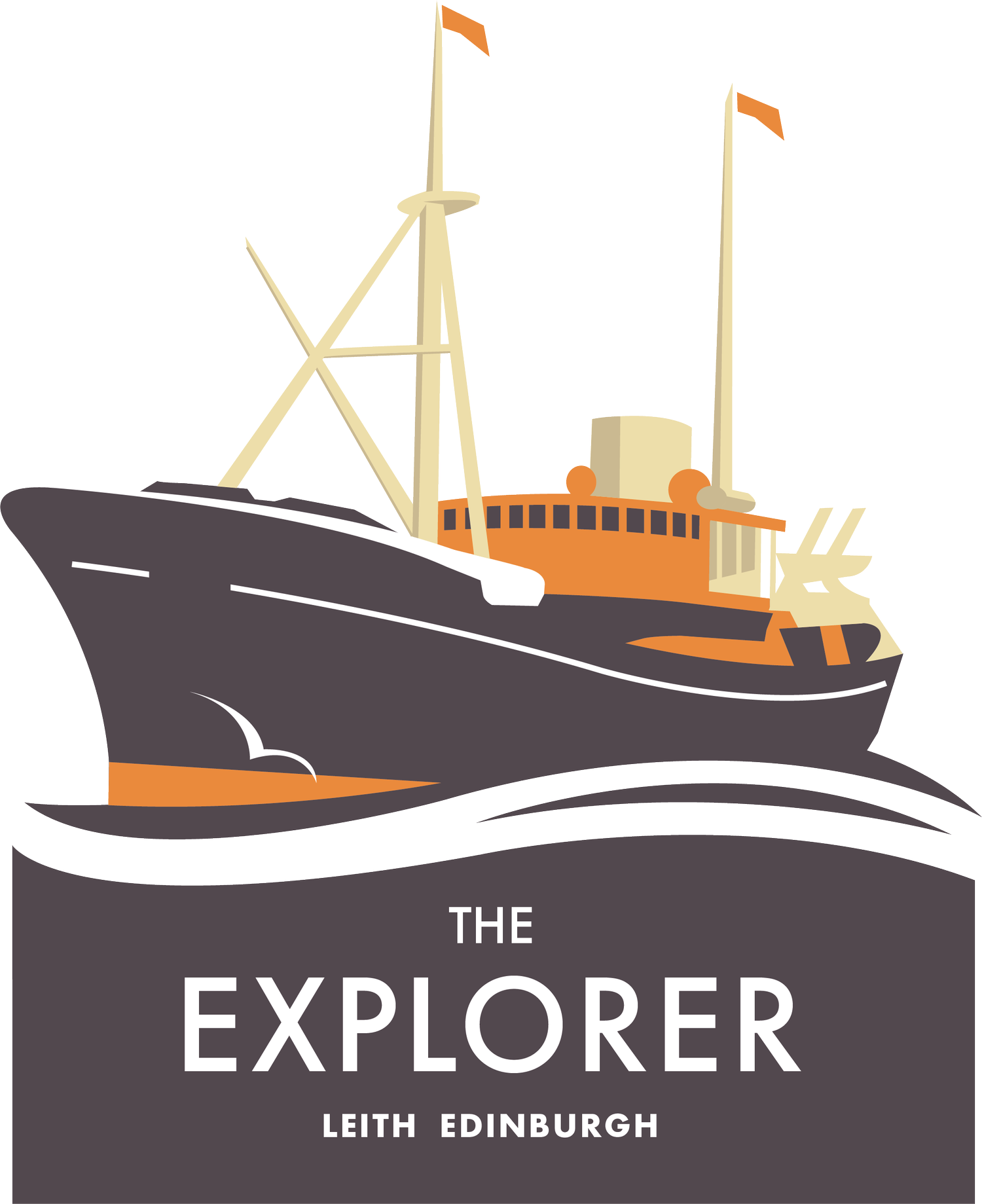History

The FRV (Fisheries Research Vessel) Explorer was one of the last vessels to be completed by the famous Aberdeen shipbuilding firm Alexander Hall and Company before it was bought by Hall, Russell and Company.
The Explorer’s hull form was based on a deep-sea Arctic side-trawler, which was strengthened for service in hostile, icy northern waters. It contained a mixture of traditional and modern technologies for the time, though unusually her main propulsion was provided by a triple-expansion steam engine and an oil-fired, three furnace boilers.
All auxiliary systems, in a departure from standard methods, were electrical. These were powered by onboard diesel generators.
Given her primary role as a research vessel FRV Explorer contained one of the first onboard analogue computers for a ship of her type and was fitted out to the highest of standards to ensure the comfort of the scientists and seamen who served on her.
The ship’s maiden voyage was in 1956, when she entered service with the Department of Agriculture and Fisheries for Scotland, working under the Marine Laboratory in Aberdeen.
She greatly advanced the development of fishing technology, whilst carrying out important hydrographic and hydrobiological survey work to further our understanding of the marine environment and its dynamics.
Decommissioned
The FRV Explorer was withdrawn from service in 1984 due to high running costs and her design limitations. Equipment and machinery were becoming dated, obsolete, and uneconomic. It was too expensive to refit her, so she was sold south to JA White Ltd. of Inverkeithing for demolition.
While there, the Aberdeen Maritime Museum visited the Explorer with the intention of purchasing the triple-expansion steam engine. It is the very last built in the Granite City and they wanted it for exhibition in their newly opened maritime museum. They were so impressed with the whole ship that she was purchased largely complete from the breakers and returned to the North East. The now re-designated SS Explorer was taken back to Aberdeen, where she was drydocked in 1989.
General maintenance work was carried out, her hull openings were plated over to prevent any ingress of water from valve failure, and many anodes were fitted to reduce corrosion.
Abandoned
The vessel was then taken from there to a mooring in the Cromarty Firth, to be laid-up at anchor while a berth could be established. She was to remain abandoned at this mooring for an incredible 10 years while various proposals for her future use were put forward and rejected, or simply never got off the ground.
During that time, she was vandalised. Many components were stolen, and her interior spaces were opened to nesting seabirds. The weather took its toll and the Explorer looked incredibly sad indeed.
In 1994 the Aberdeen Maritime Museum decided that the project was no longer viable, so they reluctantly sold the SS Explorer to Isleburn Ltd. of Invergordon for scrap. Parts of the Explorer, such as her bell and a highly detailed model, remain in the Aberdeen Maritime Museum.

A New Hope
Many former crew, local people and enthusiasts were aware that this important ship was teetering on the edge of existence, so decided that action was required. A society was formed to purchase the SS Explorer and plans were made for to restore the ship to its former glory.
The history of the SS Explorer began when she was ordered for the Scottish Office to operate for the Marine Laboratory in Aberdeen. She was launched on the 21st June 1955 by Lady Rachel Stuart, wife of the then Secretary of State for Scotland. The FRV Explorer was one of the last vessels to be completed by the famous Aberdeen shipbuilding firm of Alexander Hall & Co. before it was bought by Hall, Russell & Co.
Incidentally, built in Aberdeen around the same time as Explorer was a vessel called the Sir William Hardy. She was constructed and launched a few months earlier. In contrast to the traditional steam engine of Explorer, she was the first diesel-electric trawler to be built in the UK and would go on to international fame as Greenpeace’s Rainbow Warrior – but not before Explorer rescued her during cruise in 1969 by towing her to Scalloway after her propeller was fouled.
Explorer’s hull form was based on a deep-sea Arctic side-trawler, which was strengthened for service in hostile, icy northern waters. It contained a mixture of traditional and modern technologies for the time, though unusually her main propulsion was provided by a triple-expansion steam engine and an oil-fired, three furnace Scotch boilers. All auxiliary systems, in a departure from standard methods, were electrical. These were powered by onboard diesel generators. Given her primary role as a research vessel, in 1968, the FRV Explorer was fitted with one of the first onboard analogue computers for a ship of her type and was fitted out to the highest of standards to ensure the comfort of the scientists and seamen who served on her.
The ship’s maiden voyage was in 1956, when she entered service with the Department of Agriculture and Fisheries for Scotland, working under the Marine Laboratory in Aberdeen. She was known as a comfortable, capable vessel and continued to serve for 28 years. She greatly advanced the development of fishing technology, whilst carrying out important hydrographic and hydrobiological survey work to further our understanding of the marine environment and its dynamics.

